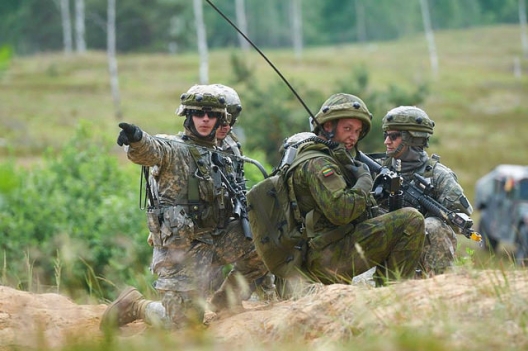 “We cannot shut off our memories. We know from our past how aggressive Russia can be if there is no very clear and strict action from the west against this kind of aggression,” says Marko Mihkelson, chairman of the Estonian parliament’s foreign affairs committee.
“We cannot shut off our memories. We know from our past how aggressive Russia can be if there is no very clear and strict action from the west against this kind of aggression,” says Marko Mihkelson, chairman of the Estonian parliament’s foreign affairs committee.
The historical associations are particularly resonant in Estonia, Latvia and Lithuania, which were all illegally annexed by the Soviet Union in 1940 just as Crimea was by Russia earlier this year. That symmetry – plus the three Baltic countries’ status as the only ex-Soviet states to be members of Nato and the EU – leads many in western capitals and independent observers in Moscow to believe that Vladimir Putin, the Russian president, could next turn his attention to the region after Ukraine.
“I think that [any Russian military action] will be on a much lower scale than in eastern Ukraine. But they might still try to spark another hotspot – within Nato territory this time,” says Igor Sutyagin, a Russian military specialist at the Royal United Services Institute in London. . . .
But, as members of Nato for the past decade, the potential prize for their destabilisation is all the greater for Mr Putin as it would call the alliance’s credibility into question. Mr Putin’s ruling circle views Nato as an organisation that is fundamentally hostile and a threat to Russia. So there was no doubting the significance of US President Barack Obama’s visit to Estonia last month, where he insisted defending Tallinn, Riga or Vilnius was “just as important as the defence of Berlin or Paris or London”.
In the Baltics themselves, there is a certain weariness about the behaviour of their bigger neighbour to the east. For them, what has happened this year in Ukraine was neither novel nor shocking as they all point back to Russia’s war with Georgia in 2008.
“They have seen that this divide-and- conquer strategy worked previously with the west. Now they are trying it against the unity of Nato,” says one Baltic security official.
The question in the Baltics and the west is how far Russia is prepared to go. Already it has started the verbal jousting that preceded its creeping invasion of parts of Ukraine, warning of threats to the local Russian speakers, which represent more than a quarter of the populations of Estonia and Latvia.
Nato’s principle of collective defence comes from Article 5 of its treaty, which says an attack on one country is an attack on all. So far, Russia’s probing – through the Estonian agent or the seizure of a Lithuanian fishing boat in international waters – has fallen below the threshold for Article 5. But some western experts question whether the US would be willing to risk a nuclear war to defend part of a Baltic country that few Americans had even heard of.
“I am afraid that Putin will create an ethnic issue inside Estonia, and then play a game whereby the Estonians ask for Nato assistance,” says Andrew Michta, adjunct fellow at the Center for Strategic and International Studies in Washington. “Nato will then begin a debate internally about whether this is really an Article 5 situation, and with a hissing sound all credibility will evaporate from the alliance. . . .”
Vladimir Tamm, a Russian-speaking Estonian citizen, lives in the border town of Narva where four-fifths of the population is ethnic Russian. “Our region [north-eastern Estonia] could be part of Russia but not the rest of the country,” he says, before adding that he is “peaceful” and that Russians will never enter Estonia like they did in Ukraine.
The situation is perhaps more serious in Latvia, which has a higher proportion of non-citizens as well as a pro-Russian party that came first in this month’s parliamentary elections. Nils Usakovs, leader of the Harmony party, which has ties with Mr Putin’s United Russia movement, says: “When we see what happened in Crimea and Ukraine, I believe it can be a unique chance to redesign some of the things that we have done wrong in the past few decades.”
Image: UA and Lithuanian troops in exercise Saber Strike, June 12, 2014 (photo: Lithuanian Armed Forces)
